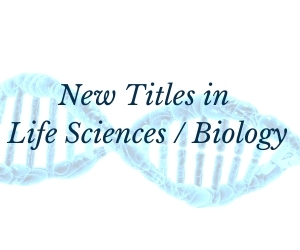Food manufacturers, researchers and society in general are increasingly highly interested in the quality and origin of food products. Considering the complexity of the food chain in a globalized world — where many players are involved between production and consumption — fraudulent food manipulation and adulteration practices are increasingly easier to conduct without being detected. Generally, food adulteration is carried out to increase volume, to mask the presence of inferior quality components, and to replace authentic substances for the seller's economic gain. Analytical methodologies to guarantee food integrity and authenticity are therefore required.
Chromatographic and Related Separation Techniques in Food Integrity and Authenticity — Volume A: Advances in Chromatographic Techniques addresses fraud prevention and the latest chromatographic and related separation analytical techniques to guarantee food integrity and authenticity by giving special attention to relevant authenticity issues in food production.
Sample Chapter(s)
Preface
Chapter 1: Current Legal Context in Food Integrity, Authenticity, and Frauds
Contents:
- Preface
- About the Editors
- Current Legal Context in Food Integrity, Authenticity, and Frauds (Oscar Núñez)
- Current Developments and Trends in the Liquid Chromatography–Mass Spectrometry Study of Food Integrity and Authenticity (Mohammad Rizwan Khan, Ruijie Deng, and Fatih ÖZ)
- Application of the Gas Chromatography Technique in the Characterization and Authentication of Food Products (Ancuta Nartea, Edoardo Bartolucci, Paolo Lucci, Natale G Frega, and Deborah Pacetti)
- The Role of Capillary Electrophoresis in Food Integrity and Authenticity (Oscar Núñez)
- Ion Mobility Spectrometry to Assess Food Authenticity and Integrity (Andrés Martín-Gómez and Lourdes Arce)
- Chromatographic Fingerprinting Approaches in Food Authentication (Guillem Campmajó and Oscar Núñez)
- The Role of Chemometrics in Food Integrity and Authenticity (Sonia Sentellas and Javier Saurina)
- Index
Readership: Advanced undergraduate and graduate students, researchers and practitioners in the fields of food safety, control and authenticity, food control agencies. May also be appropriate for analytical chemistry courses.

Dr Oscar Núñez studied chemistry at the University of Barcelona where he also received his PhD in 2004. He worked as visiting researcher for half a year in the development of online pre-concentration methods using micellar electrokinetic chromatography (MEKC) at the University of Hyogo (Japan) in collaboration with Professor Terabe (father of MEKC technique). Starting in October 2005, he joined the Kyoto Institute of Technology (Japan) as a two-year post-doc researcher working with Professor Tanaka developing monolithic silica capillary columns under a fellowship from the Japan Society for the Promotion of Science. In November 2007, he joined the University of Barcelona, working in the Chromatography, Capillary Electrophoresis and Mass Spectrometry research group. Since December 2014, he has been Serra Húnter Professor at the Section of Analytical Chemistry (Department of Chemical Engineering and Analytical Chemistry, University of Barcelona). He has more than 130 scientific papers and book chapters to his name, and he is editor of three books on LC-MS/MS, sample preparation techniques in food analysis, and capillary electrophoresis. He has extensive experience in the development of liquid chromatography methods coupled to low- and high-resolution mass spectrometry, as well as sample treatment procedures, for environmental and food analysis. His major research areas nowadays involve the characterization, classification and authentication of food and natural products, as well as the prevention of food frauds.

Mr Guillem Campmajó studied his Chemistry Bachelor's Degree at the University of Barcelona. He carried out his Bachelor's thesis as an Erasmus+ student at the University of Bologna, under Professor Roda's supervision, working on chemiluminescent bioanalytical assays for clinical biomarkers. After that, in 2017, he started the Analytical Chemistry Master's Degree at the University of Barcelona. He carried out the Master's thesis in the CECEM (Chromatography, Capillary Electrophoresis, and Mass Spectrometry) research group, under the supervision of Dr Núñez, making his first immersion in the food authentication field. In 2018, he started his PhD thesis (also under the supervision of Dr Núñez), which deals with the use of chromatographic profiling or fingerprinting for the characterization, classification, and authentication of food products.





